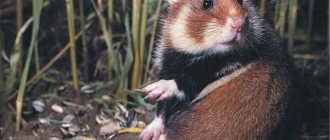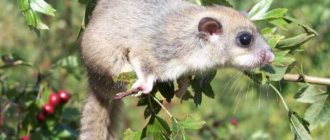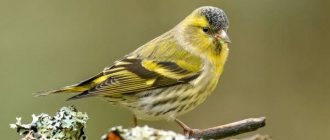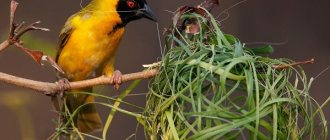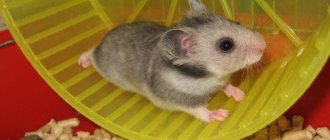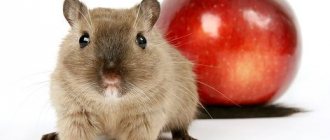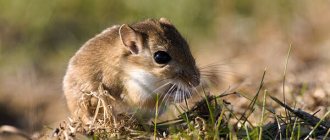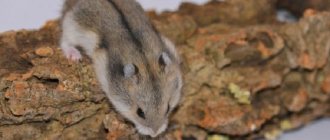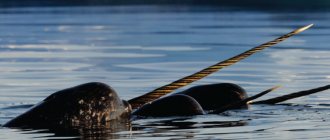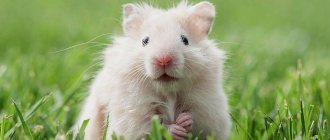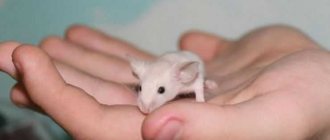Australia is a small continent, otherwise it is called the fifth continent. Australia's fauna is unique, but there are absolutely no ruminants, thick-skinned mammals or monkeys. Marsupials predominate, having a large fold of skin on their abdomen. Their cubs are born very small, hairless, blind and incapable of independent life. After birth, they crawl into a pouch that contains nipples with milk inside, and grow there. Australia's animals are interesting, most of them are not found anywhere else in the world.
Animals of Australia: list. Marsupials of Australia
Australia is a small continent, otherwise it is called the fifth continent. Australia's fauna is unique, but there are absolutely no ruminants, thick-skinned mammals or monkeys. Marsupials predominate, having a large fold of skin on their abdomen. Their cubs are born very small, hairless, blind and incapable of independent life. After birth, they crawl into a pouch that contains nipples with milk inside, and grow there. Australia's animals are interesting, most of them are not found anywhere else in the world.
Possums
The possums (cuscus) marsupials of Australia include several families of small-sized animals that lead an arboreal lifestyle. The most interesting of them are the Mountain couscous, which lives in the mountains and enters a long hibernation; The fox kuzu, the only one of its kind that has adapted to city life, whose nests can be found under the roofs of houses in the suburbs; a tiny honeyeater with an elongated trunk-shaped muzzle feeds on pollen, nectar and small insects, lives in trees, but does not eat honey; marsupial flying squirrels, similar to the placental flying squirrel, with a skin membrane on the sides between the front and hind legs.
List of animals of Australia
In this country there are many species that live both throughout the continent and only in some areas.
Animals of Australia: list of main representatives:
- kangaroo;
- rabbit;
- Moloch;
- opossum;
- couscous;
- ant-eater;
- Tasmanian devil;
- flying squirrel;
- bandicoot;
- wombat;
- marsupial mole;
- snake-necked turtle;
- echidna;
- saltwater crocodile;
- hatteria;
- Ulis;
- short-tailed skink;
- snakes;
- sloth.
This listing is far from complete; many species are listed in the Red Book and are on the verge of extinction.
Reptiles and amphibians
The continent's fauna is very rich in reptiles. There are 2 species of crocodiles, 10 species of turtles, about 240 species of lizards and about 140 species of snakes known here.
Turtles
All Australian turtles belong to the snake-necked turtle family. These are relatively small reptiles: the length of their shell is 15-50 cm.
They are found in all areas where there is fresh water. They can often be seen lying in the water or on the shore. They feed on worms, mollusks, crustaceans
Crocodiles
There are two known species of crocodiles on the mainland: the saltwater crocodiles and the Australian narrow-snouted crocodiles.
The combed crocodile is the largest species: the length of individual individuals can reach up to 7 m and weight up to 1 ton. This crocodile got its name from a pair of powerful ridges running from the eyes almost to the front third of the muzzle. The predator inspires horror with its terrible mouth alone, dotted with rows of large teeth in the amount of 64 to 68 pieces. It lives in the lower reaches of rivers or in swamps.
The Australian narrow-snouted crocodile is only 2.5 m long and poses no danger to humans.
Lizards
The lizards of Australia are very peculiar. First of all, we should mention the endemic family Lepidopidae, also known as legless lizards. These reptiles are more like snakes: their limbs are reduced. Their tail is very long and brittle. The sizes are different: small species can barely reach a length of 15 cm, while large ones grow up to 120 cm. They live on the soil surface, under stones or lead a burrowing lifestyle.
Some species can make loud clicking sounds. They feed on invertebrate animals, less often small lizards.
The desert areas are home to the moloch, a very unusual lizard of the agama family. It is also called the “prickly devil,” and for good reason. After all, the body of the moloch is covered from head to toe with numerous short sharp spines.
The body length of this lizard is 20–22 cm. The upper side of the body is light yellow to brown, the underside is light buffy. It feeds exclusively on ants.
The largest of the lizards, monitor lizards, live in Australia. There are about 15 species here. The largest local monitor lizard is a giant one: its length reaches 2.5 m. It is found in the arid parts of the continent.
Giant monitor lizard
Large monitor lizards feed on snakes, rodents, birds, and carrion.
Sand and eastern monitor lizards are also common here.
Sand monitor
Gigantic smooth lizards, or blue-tongued skinks, are found throughout Australia.
Blue tongue skink
Snakes
There are also several species of pythons in the Australian fauna. The largest of them is the amethyst python, reaching 6 m in length. It lives in the northernmost areas of the tropical rainforest. Its main food is wallaby.
Another python is the rhombic python. They reach a length of 3 m and are brightly colored. It feeds on small marsupials, rodents and birds.
Australia is known for its venomous snakes; they all belong to the asp family. Thus, there are 8 species of false adders - small snakes with weak venom. Brown snakes are common throughout the continent.
The most dangerous of the local snakes is the taipan. One release of this reptile's venom is enough to kill about 100 people. Fortunately, this is a rather rare species that lives far from human habitation.
Taipan
The tiger snake is found everywhere here, reaching a length of 2 m. It is characterized by an olive-red color with yellow and black transverse stripes.
Tiger snake
The tiger snake has one of the most powerful venoms among all land snakes.
Amphibians
Amphibians are represented on the continent only by anurans, although the number of their species is quite large - about 110. 49 species of toads are known here, 12 of which live in the deserts of Central Australia.
An interesting thing is the Australian desert toad, which waits out drought by burrowing into the soil to a depth of 30–35 cm. Aborigines hunt these toads as a source of moisture and food.
Marsupials of Australia are the main inhabitants
There are over 140 different species of such animals in this country, the most famous are kangaroos, their population numbers more than 60 million. There are 55 species in total. These Australian animals come in different sizes, their weight ranges from 0.5 to 90 kg. Outside the city they are found quite often. You can watch them from afar on the small Kangaroo Island and on the Flinders Ridge. If you want to take a closer look at them, you should visit Kosciuszko and Namadgi parks, as well as Mary Island or Pebbly Beach. If the area is sparsely populated, then these animals can be found quite often and right on the roads.
Another common species is the koala. Many people think that this is a small bear, but this is incorrect. You can watch koalas in eastern Australia, mainly on the coast. The most popular habitats are Port Stephens and Tidbinbilla and Lone Pine Nature Reserves, Yanchep Park and Phillip Island.
Wombats are marsupials of Australia. Quite obese, living in burrows and often reaching 36 kg. It’s not easy to find them in their normal habitat, but it’s still possible. To do this, you need to visit Australian parks and the Wilson Promontory Peninsula. I also call them Australian rabbits. Although the wombat is similar to the latter only in its general outline. But compared to a rabbit, he is very large.
Content
- 1 Monotremes 1.1 Ornithorhynchids
- 1.2 Tachyglossidae
- 2.1 Dasyuromorphy (marsupial carnivores) 2.1.1 Thylacinidae
- 2.2.1 Chaeropodidae
- 2.3.1 Notoryctidae
- 2.4.1 Vombatiformes (wombats, koalas) 2.4.1.1 Vombatidae
- 2.4.2.1 Phalangeridae
- 2.4.3.1 Hypsiprymnodontidae
Mammals
There are no large predators on the continent. The dingo, the world famous wild dog, is considered the largest on land. What other animals are there in Australia: spotted martens, Tasmanian devils and anteaters. They are all no larger than an ordinary domestic cat.
Dingoes inhabit the entire continent, with the exception of Tasmania. They are found in the Kimberley, Fraser Island and the deserts of Northern and South Australia. Tasmanian devils are found exclusively on the island of the same name. This is a unique rare animal listed in the Red Book. The island of Tasmania is also home to several rare species of parrots that can only be seen there. Spotted martens are an endangered species, so under normal conditions it is almost impossible to see them. The only place you can try to find them is the forests of Tasmania and the south of Australia, and occasionally in Queensland. The rabbit bandicoot, which can be found in the François Peron National Park, is very interesting.
Dangerous animals of Australia on land and sea
Animals that you should be wary of in Australia live not only on land, but also in water. For example, the bite of a geographical cone (sea mollusk) is fatal. Death occurs within one minute. Its poison consists of different peptides and is considered the most dangerous and powerful in the whole world.
The king mulga is one of the most venomous snakes in Australia. It can reach two meters in length, and even just one bite can be fatal. The poison is released in large doses and instantly spreads throughout the body.
Oviparous
Monotremes, or oviparous animals, are the only mammals that reproduce by laying eggs. Representatives of this order, the platypus and the echidna, live in Australia.
Echidna
This unusual medium-sized animal (body weight up to 6 kg) lives in forests, shrub-steppe landscapes, and sandy plains. Leads a twilight and nocturnal solitary lifestyle. Each individual has its own hunting area. If there is enough food, the echidna is active all year round, but if there is a lack of it, it can fall into torpor even in the summer.
The echidna's diet consists of small insects, mainly ants and termites. The animal collects prey with its long sticky tongue.
Platypus
The platypus lives near rivers, lakes and mountain streams in Eastern Australia, spending most of its time in the water. And its whole appearance speaks of adaptation to a semi-aquatic lifestyle. The body is flattened, covered with short thick fur. The head ends in a “duck beak” about 7 cm long, penetrated by the endings of nerve fibers. The structure of the beak allows the platypus to use it to detect prey. The ear openings open next to the small eyes. Five-fingered limbs with a swimming membrane. There is a spur on the hind legs into which the duct of the poisonous gland opens. The tail is flat and quite powerful. The bag is missing.
The diet is based on larvae of aquatic insects, small fish, crustaceans, mollusks, etc.
Marsupials
For most people, Australia is a continent home to marsupials that are not like those that everyone is used to seeing.
The marsupials of Australia differ in appearance, have a different physiology and a different body structure. Females have a pouch on their bellies where they carry their young, which are born undeveloped.
Currently, there are about 250 species of marsupials.
The main difference between marsupials is that their cubs are born underdeveloped and for several months they grow, being in this very pouch on the mother’s stomach. Even when they grow up and can move and feed independently, they do not part with the bag and hide in it at the slightest danger. This continues until his little brother takes his place.
The fauna of Australia is very diverse. There are several dozen animals in Australia, mostly marsupials. The most famous of this order is the kangaroo. Probably everyone is familiar with this animal, although from hearsay, because the kangaroo is a kind of calling card of Australia. Kangaroos are found only in Australia, with the exception of several species found on the islands of Oceania.
In general, there are several types of kangaroos. The most famous is the large red kangaroo. Large red kangaroos reach a height of 2 meters and a weight of up to 80 kg or more. As you know, kangaroos move by jumping, so the red kangaroo’s long jumps can be up to 10 m. And these jumpers can overcome up to 3 meters in height. “Redheads” live mainly in flat areas such as “savannas”. They eat plant foods.
The second species is the gray “giant” or forest kangaroo. These kangaroos are slightly smaller in size, but not fast. A gray kangaroo can easily reach speeds of up to 65 km/h. So hunters, even in a car, cannot always catch up with him. Although, in principle, the “Big Gray”, although of impressive size, is a completely peaceful and trusting animal.
The third species is the wallaroo mountain kangaroo. They have a more massive build and relatively short hind legs - they are perhaps the most agile of the kangaroos. They live in mountainous areas and easily jump from rock to rock and along mountain steeps, perhaps better than any mountain goat.
There is a type of kangaroo that lives in trees. They are somewhat different from those living on earth. This is understandable, because climbing trees requires its own characteristics. But, nevertheless, these are just as interesting creatures and they also carry their children in their bags.
Very small kangaroos also live in Australia. Rather, it is something between a kangaroo and a rat. They are called quokkas. They are somewhat similar to our jerboas, but they are also marsupials. These herbivores are very shy and are mainly nocturnal.
No less interesting is another representative of Australian marsupials, the koala bear. Very cute, looks like a teddy bear. The koala lives in eucalyptus groves. Spends all his time in the trees. He doesn’t drink water because he eats eucalyptus leaves, and their juice is enough for him. Koalas do not recognize any other food.
There is also the largest burrowing animal in the marsupial family, the wombat. Outwardly, it looks like a small bear, but it is a herbivore. An adult wombat reaches a meter or more in length and can weigh more than 40 kg
There is another amazing mammal in Australia - the marsupial anteater nambat. This is quite a beautiful animal, measuring from 20 to 30 cm with striped coloring. In principle, it is a predator, because it feeds on living creatures. Its food is termites. Nambat belongs to the class of marsupials, although it does not have a bag as such. On his belly there is a milky field framed by curly hair. Newborn naked and blind cubs, clinging to the fur, hang on the nipples and live like this for almost 4 months. When they become larger, the female leaves them in a hole or hollow and feeds them at night, because she is very shy.
One of the rare marsupials is the spotted marsupial marten. This beautiful animal is a real predator that eats everything that is smaller in size: rabbits, birds, it can eat a snake, a fish, well, anything that comes along. The marten is more than half a meter in length and can weigh up to 10 kg. In the spotted marsupial marten, the brood pouch is not permanent. It develops during the breeding season, is located at the back and opens towards the tail. Normally it's just a fold of skin. Unfortunately, this animal is on the verge of extinction and can only be found in national parks.
Another of the now rare marsupials is the rabbit bandicoot. Outwardly, bandicoots are similar to rats, only they have a more elongated muzzle and large ears, like a hare. These animals can be up to 45 centimeters long, plus a tail up to 20 cm. Bandicoots, or bilbies as they are otherwise called, feed on everything that comes their way. They can eat both insects and their larvae, and easily cope with small lizards and other living creatures. But they can also get by with various roots, mushrooms and other plant foods.
Previously, Australia was home to many marsupial predators called the marsupial devil. This is a rather unpleasant, vicious and foul-smelling animal. The appearance matches its name. But over time, this animal was supplanted by the Dingo dog, and now the marsupial devil can only be seen in the zoo. It can only be seen in the wild in Tasmania, where it is called the Tasmanian devil.
Of course, in such a brief review it is impossible to talk about all the marsupials living in Australia, but we hope that the information obtained in this article gives a general idea of these amazing animals living only on this sunny continent.
Australian marsupials - list and description with photos
Australia is a continent of the Southern Hemisphere, washed by the waters of the Pacific and Indian Oceans, the entire area of which is occupied by the state of the same name. The fauna of this continent is unique in its own way, because for a long time it was isolated from the outside world.
A peculiarity of the Australian fauna is the complete absence of monkeys, ruminants and thick-skinned mammals. But instead of these species, Australia is inhabited by marsupials, which will be discussed.
Recommendations
- Menkhorst P and Knight F (2001) A Field Guide to the Mammals of Australia
, Oxford University Press, Melbourne ISBN 0-19-550870-X - Van Dyke, S. and Strachan, R. (eds.) (2008) Mammals of Australia
, Third edition, New Netherland/Queensland Museum, Brisbane ISBN 978-1-877069-25-3 - Groves, K. P. (2005). Wilson, D.; Reeder, D. M. (ed.). Mammal Species of the World: A Taxonomic and Geographical Guide
(3rd ed.). Baltimore: Johns Hopkins University Press. pp. 1–2, 22–70. ISBN 0-801-88221-4. OCLC 62265494. - Gardner, A. (2005). Wilson, D.; Reeder, D. (ed.). Mammal Species of the World: A Taxonomic and Geographical Guide
(3rd ed.). Johns Hopkins University Press. pp. 3–21. ISBN 978-0-8018-8221-0. OCLC 62265494. - "IUCN Red List of Threatened Species". International Union for Conservation of Nature and Natural Resources. Retrieved March 5, 2014.
What are marsupials?
This class of animals is unique because they have a fold of skin on their abdomen, like a pocket or pouch, that contains their nipples. Marsupial cubs are born small, blind , and have no fur. This is where a warm and cozy mother’s bag comes to the rescue, where babies feed and develop until they can see and move independently. They begin to briefly emerge from the pouch at the age of several months, and finally leave it at the age of one year. These unusual animals live exclusively in Australia, being its calling card.
List of marsupials
- The koala is a marsupial bear that lives in trees and never comes down from them. This not particularly large, slow animal feeds only on shoots and fresh leaves of eucalyptus, and therefore lives in eucalyptus thickets. These bears are quite peaceful creatures who love to sleep more than anything else. Their characteristic feature is that they do not drink water at all. A koala cub is born tiny, weighing no more than five grams. Immediately after birth, he climbs into a cozy bag, and after leaving it, six months later he continues to move around on his mother’s back.
- The kangaroo is a herbivore that moves by hopping on its powerful hind legs. The record holder for jumping among these representatives of marsupials is the red kangaroo - it can easily jump ten meters in length and up to three meters. He is also the largest among these animals. Its height can reach two meters and weight more than 80 kg. But the fastest is the gray “giant” kangaroo, which easily reaches speeds of up to 67 km/h.
